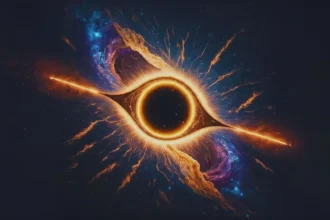A longstanding cosmic puzzle surrounding the conspicuous absence of spiral galaxies akin to our Milky Way in the Supergalactic Plane has been unraveled by an international team of astrophysicists from Durham University, UK, and the University of Helsinki, Finland. Their groundbreaking insights, published in Nature Astronomy, shed light on the unique distribution of galaxies within this colossal structure, almost a billion light years across, that houses the Milky Way and numerous galaxy clusters.
The Puzzle: Missing Spiral Galaxies
The Supergalactic Plane, a vast structure hosting the Milky Way and several massive galaxy clusters, has long puzzled scientists due to the absence of bright disk galaxies with spiral arms. While elliptical galaxies abound in this region, their spiral counterparts have been notably scarce. The research aimed to demystify this cosmic anomaly.
Insights from the SIBELIUS Supercomputer Simulation
The team turned to the SIBELIUS (Simulations Beyond the Local Universe) supercomputer simulation, a groundbreaking tool tracking the universe’s evolution over 13.8 billion years. Unlike conventional simulations, SIBELIUS accurately replicates observed structures, including the Supergalactic Plane. The simulation revealed that the distinct distributions of elliptical and disk galaxies within the plane are natural outcomes of their varying environments.
Galactic Evolution and Interactions
Dense galaxy clusters within the Supergalactic Plane are identified as hotbeds for frequent interactions and mergers. These interactions transform spiral galaxies into ellipticals and contribute to the growth of supermassive black holes. In contrast, galaxies situated away from the Plane evolve with minimal interference, allowing them to retain their distinctive spiral architecture.
Validation of the Standard Model of the Universe
The study’s co-author, Professor Carlos Frenk, emphasizes the significance of the findings, affirming that the unusual distribution of galaxies within the Supergalactic Plane is not an anomaly. The research bolsters the standard model of the universe, grounded in the prevalence of cold dark matter, by showcasing its ability to account for even the most extraordinary cosmic structures.
Serendipitous Discovery and Key Symposium Role
Lead author Dr. Till Sawala highlights the serendipitous nature of the discovery, originating from a symposium honoring Nobel laureate Professor Jim Peebles. Dr. Sawala realized the potential of their simulation in unraveling the cosmic mystery presented by Peebles. The study was conducted using the COSMA 8 supercomputer at Durham University and CSC’s Mahti supercomputer in Finland.
Conclusion: A Deeper Understanding of Cosmic Tapestry
Beyond solving the mystery of missing Milky Way-like galaxies, this research contributes to our understanding of galactic evolution. Furthermore, it reinforces the validity of the current cosmological model, providing profound insights into the universe’s grand tapestry and the unique place of the Milky Way within it.










